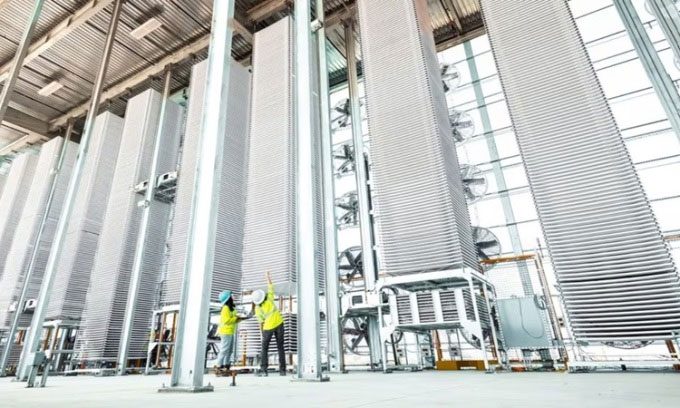The Heirloom direct air capture plant has an initial capacity of 1,000 tons of CO2 per year and is set to scale up rapidly.
In an open-air warehouse in California’s Central Valley, shelves rising over 12 meters contain hundreds of trays filled with a white powder that becomes brittle as it absorbs carbon dioxide (CO2) from the sky. The startup building this facility, Heirloom Carbon Technologies, claims this is the first commercial plant in the U.S. using direct air capture technology, which includes greenhouse gases from the atmosphere. Another plant is operational in Iceland, and several experts suggest that this technology could play a crucial role in combating climate change, according to Yahoo.

Processed limestone trays used for CO2 capture at Heirloom’s plant. (Photo: Reuters).
Heirloom will collect CO2 from the air and permanently seal it in concrete, thus preventing this gas from warming the planet. To turn a profit, Heirloom sells carbon removal credits to companies that pay to offset their own emissions. Microsoft has contracted with Heirloom to remove 315,000 tons of CO2 from the atmosphere. The company’s first facility in Tracy opened on November 9 and is relatively small. The plant can absorb up to 1,000 tons of CO2 each year, equivalent to the emissions from about 200 vehicles. However, Heirloom hopes to scale up quickly.
The idea of using CO2 capture technology from the sky is gradually becoming a reality. Hundreds of startups have emerged. Critics argue that many artificial methods aimed at removing CO2 from the atmosphere are very costly, with prices ranging from $600 per ton, and could detract from efforts to cut emissions. Environmental experts warn that this could prolong the use of fossil fuels.
However, many researchers believe that testing this technology is essential. Countries have delayed reducing greenhouse gas emissions for so long that it is nearly impossible to keep global warming within acceptable limits unless billions of tons of CO2 are removed from the atmosphere by mid-century while also cutting emissions.
At the California plant, workers heat limestone to nearly 900 degrees Celsius in an electric kiln powered by renewable energy. The CO2 released from the limestone is pumped into a storage tank. The remaining calcium oxide, resembling flour, is mixed with water and sprayed onto large trays. Robots then place the trays on high shelves to expose them to outdoor air. Over more than three days, the white powder absorbs CO2 and transforms back into limestone. The cycle continues to repeat.
In California, Heirloom collaborates with CarbonCure, a company specializing in mixing CO2 into concrete to mineralize it, preventing it from escaping into the atmosphere. In future projects, Heirloom also plans to pump CO2 into underground storage wells and bury it. Heirloom has not disclosed the exact costs, but experts estimate that current direct air capture technology costs between $600 and $1,000 per ton of CO2, making it the most expensive method for reducing emissions.
Heirloom’s long-term goal is to reduce costs to $100 per ton, which they aim to achieve through economies of scale and mass production. For the next plant, expected to be located in Louisiana, Heirloom will utilize a more efficient kiln and a denser layout to save on land costs.




















































